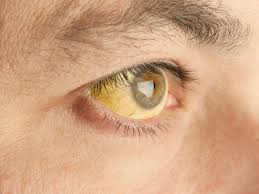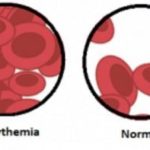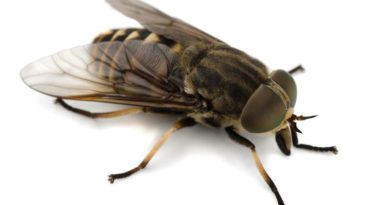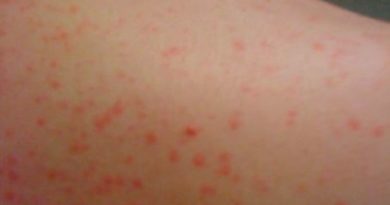Scleral Icterus
What is Scleral Icterus?
When an individual has yellow eyes, he or she is thought to have a problem with their liver like liver disease. Scleral icterus manifests with symptoms like yellowing of an individual’s eye part that is usually white, and it can indicate a dysfunctional liver. In newborns sclera icterus occurs because their liver hasn’t matured. To help identify the cause, a person with sclera icterus will require proper testing for liver enzymes.1

The classic definition of scleral icterus is excessive presence of a substance known as bilirubin in an individual’s bloodstream that causes the whites of eyes to have a yellowish coloration. Scleral icterus isn’t a disorder or disease in itself, but rather a symptom of an underlying condition or disease, usually of the liver. Scleral icterus may also indicate that there is obstruction of blood flow that prevents a person’s body from eliminating waste. Once the underlying condition is resolved, the discoloration may resolve or even managed.2
Causes of Scleral Icterus
Bilirubin has an orangey to yellow appearance and it is created when red blood cells are broken down. Scleral icterus is linked to disorders of the liver that affect how the substance is expelled from the body. Bilirubin passes through the liver prior to being excreted from an individual’s body. If the liver doesn’t function properly, the levels of this substance may elevate in blood causing sclera icterus or yellowing of a person’s eye part that is normally white in color. Scleral icterus makes the white of eyes to become dark taking hues of bright yellow to something like dark orange. However, sclera icterus doesn’t affect a person’s vision. The coloring of the person’s eyes may fall under three classes:1,2,3
- Hepatic
- Pre-hepatic
- Post hepatic
When the liver doesn’t function as it should, bilirubin isn’t released out of the person’s body and it remains circulating in blood and ends up in different parts of the individual’s body including the eyes. Scleral icterus can occur before, during, and after liver processing activity depending on what is causing the liver to malfunction.
Pre-hepatic sclera icterus occurs before bilirubin reaches the liver, hepatic or hepatocellular scleral icterus occurs when bilirubin has reached the liver, and post-hepatic or cholestatic occurs after when bilirubin has been conjugated in the individual’s liver.4
Causes of scleral icterus are:1,2,3
Biliary colic
Also referred to as gallbladder attack, biliary colic may contribute to sclera icterus since gallstones tends to block an individual’s bile duct. Biliary colic may also induce pain within the upper right side of a person’s abdominal area. The pain can radiate to reach the back or shoulder. Biliary colic may occur with any type of gallbladder disease.
Epstein-Barry virus
A stain of herpes virus referred to as Epstein-Barry virus, which is also known as mono, may cause sclera icterus. An infection caused by this virus may affect liver cells because it causes obstruction, which in turn affects the function of an individual’s liver leading to increased amount of bilirubin in blood. When this happens, the whites of eyes turn yellow or orangey.
Alcoholic hepatitis
Excessive intake of alcohol may contribute to alcohol hepatitis that involves liver inflammation. The excessive alcohol consumption may cause serious liver damage something that prevents the organ from executing its filtering activity properly.
Hepatitis virus
People who have hepatitis A and B may also have sclera icterus because the infection affects the liver. Hepatitis is considered highly contagious and there are several types of the virus. For example, hepatitis A may be contracted by taking food or water that is contaminated with the virus. However, hepatitis A presents with symptoms that mostly resolve on their own.
Cirrhosis
Liver cirrhosis may occur due to chronic alcoholism or an infection caused by hepatitis B and C. The condition causes irreversible damage to a person’s liver and the symptoms present in form of loss of appetite, weakness, and yellowing of skin or jaundice.
Other conditions like hepatitis C, liver cirrhosis, sickle cell anemia, and injury to a person’s liver may also result in sclera icterus. There are over 40 rare illnesses and conditions that are also associated with sclera icterus like pancreatic cancer, Wilson’s disease, gallbladder cancer, liver cancer, and hepatitis E and D. Overdose of acetaminophen may also cause the symptom.
Scleral Icterus Symptoms
Although sclera icterus is a symptom of another condition or disease, there are signs that may come along with it that indicate a problem with bloodstream or liver. 1,2
A person with sclera icterus will have yellowish eyes. A person may have the yellow hue occurring on their skin in different parts including the head. It is also likely that itchiness will occur and it is felt deep in the person’s body.
Other symptoms present along with sclera icterus are:1,2
- Pale stools
- Abdominal pain
- Fever
- Vomiting
- Fatigue
- Weight loss
Jaundice vs. Scleral Icterus
Both sclera icterus and jaundice involve yellowing of body parts. Jaundice is first seen in eyes of an individual and at this time it can be termed as sclera icterus. However, as the pigment gets deposited in other areas like the mucous membrane, the face, and skin, it causes a person to have yellowing skin in different parts. Scleral icterus is only limited to the eyes, and it can be a sign of jaundice.
Bilirubin is a waste product that remains in a person’s body when iron is removed from blood hemoglobin found in red blood cells. Bilirubin has to be excreted from the body, but before that, it travels to the liver where it is conjugated or converted for it to be expelled out of a person’s body. If there is excess of bilirubin because it has not been excreted, it can leak to surrounding tissues making them become saturated with the pigment thus the yellow appearance.4,5
Sometimes, the term ‘icterus’ may be used to refer to jaundice. Icterus is picked from a Greek word ‘icteric’ which is used to describe the yellowish pigment presenting in skin or the yellowing of an individual’s whites of eyes. Icteric may also refer to yellowing of mucous membranes in a person’s body.4
Diagnosis of Scleral Icterus
A physician will examine the symptoms of the patient including the yellowing whites of his or her eyes. A number of tests may be done to examine bilirubin levels in blood. Liver enzyme tests are also performed to check how the liver is functioning.
Some patients have dark sclera that occurs naturally and when this is the case, it may be difficult to diagnose them of sclera icterus. Individuals having a darker skin may have scleras that are creamy in color rather than whitish scleras.
Treatment for Scleral Icterus
Treating a patient of scleral icterus largely depends on the cause. If the problem is due to a liver failure, a liver transplant may be done. In children who have sclera icterus, treatment mainly involves phototherapy sessions to help the color of skin and eyes return to normal.
Phototherapy helps convert bilirubin in eyes and skin into a metabolized form. Some causes of sclera icterus aren’t curable but they can be managed. Managing the cause may help resolve the issue of sclera icterus. A viral infection like hepatitis A may be treated using anti-virals. Liver cirrhosis that isn’t resolved with other treatment may require a transplant.1,2,3
Reference List
- Scleral icterus, a symptom of liver disease? Causes, symptoms, and treatment options. https://www.belmarrahealth.com/
- Scleral Icterus: Causes, Symptoms, Diagnosis, and Treatment. https://www.doctorshealthpress.com/general-health-articles/scleral-icterus/
- Medical Conditions that Cause Scleral Icterus & its Treatment! https://www.epainassist.com/eye-pain/scleral-icterus
- Differences Between Jaundice and Icterus. http://www.differencebetween.net/science/health/disease-health/differences-between-jaundice-and-icterus/
- Jaundice. https://www.sciencedirect.com/topics/medicine-and-dentistry/jaundice












